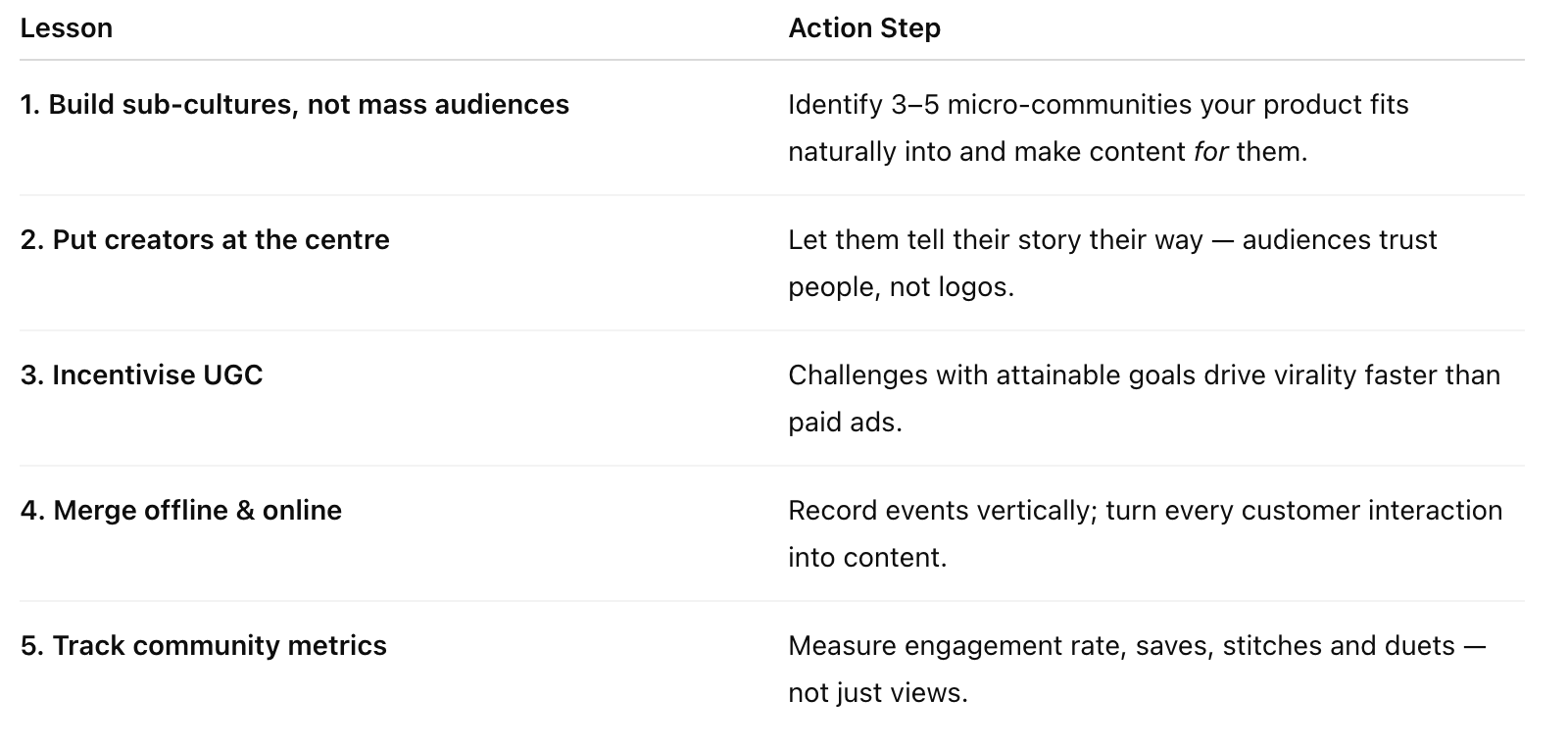Few British brands have mastered TikTok like Gymshark.
What started in a Birmingham garage in 2012 has grown into a £1-billion global fitness empire, powered not by traditional advertising, but by community-driven social media.
TikTok has been central to that evolution — helping Gymshark reinvent what a modern fitness brand looks like: raw, inclusive, and creator-led.
This is how they did it, what the numbers look like, and what other UK brands can learn.
1. The Challenge
By 2019 Gymshark had already built a cult following on Instagram and YouTube, but it faced a new problem: younger audiences were shifting to TikTok.
The brand needed to:
- Stay culturally relevant with Gen Z
- Humanise its image beyond polished influencer content
- Turn workout inspiration into purchase intent
Traditional paid media wasn’t the answer. TikTok demanded something faster, funnier, and far more authentic.
2. The Strategy: Build a Movement, Not a Feed
Gymshark approached TikTok not as another ad channel but as a community playground.
Its goal was to make people feel part of something — whether they lifted 200 kg or were just starting their first push-up.
Key principles:
- Creator-led storytelling – recruit real gym-goers, PTs and athletes who already post daily.
- Micro-community targeting – use hashtags like #GymTok, #FitFamUK, #LiftTok to reach niche sub-cultures.
- Humour and relatability – replace perfection with personality (inside jokes, fails, and gym banter).
- Always-on posting – treat TikTok like a conversation, not a campaign.
3. The Execution
a. Creator Partnerships
Gymshark built a “TikTok Athlete” network of TikTok micro-creators, each trusted within their niche.
Rather than polished influencer deals, these partnerships looked like everyday content: workouts, challenges, duets, and reactions.
Creators were given full creative control — a deliberate shift from brand-first to creator-first storytelling.
b. Viral Challenges
The #Gymshark66 Challenge (commit to 66 days of change) became the brand’s TikTok signature.
It encouraged people to document fitness progress in bite-size clips, flooding feeds with user stories.
Within weeks, the hashtag had over 250 million views, with participants ranging from fitness influencers to first-time gym-goers.
c. Real-Time Engagement
Gymshark’s social team comments back, duets trending clips, and reposts community videos daily.
That direct interaction — rare for a brand of its size — fuels loyalty.
Many top-performing posts started as fan videos later stitched by the brand account.
d. In-Person Meets → TikTok Content Loops
Gymshark turned offline events into content factories.
Pop-up gyms, athlete tours and “Lifting Club” sessions were filmed vertically and repurposed for TikTok, creating a feedback loop between real-world community and digital reach.
4. The Results

Beyond numbers, TikTok has become Gymshark’s primary awareness engine for Gen Z — fuelling both DTC sales and retail expansion in the US and UK.
5. What Made It Work
Authenticity over aspiration
Gymshark dropped the “perfect athlete” narrative and showed genuine personalities, mistakes and gym humour.
Community participation
Every campaign invited user involvement: duet this, stitch that, join the challenge. People didn’t just watch — they belonged.
Always learning
The brand’s team tests 10–15 pieces of creative a week, analysing watch-through rates, comment sentiment and saves — then doubling down on what works.
Integrated commerce
Recent Gymshark Lives and Spark Ads link directly to TikTok Shop listings. When paired with challenge-related hashtags, conversion rates hit 9–10%, according to industry benchmarks.
6. Lessons for UK Brands

7. The Somerce Perspective
At Somerce, we see Gymshark as proof that TikTok is a brand-building platform disguised as entertainment.
They didn’t chase trends; they created them — by giving the community ownership of the story.
The lesson for other UK brands is simple:
Stop posting ads. Start building tribes.
Whether you’re a wellness start-up or a heritage retailer, the future of social commerce lies in emotional gravity — the pull of a shared identity powered by creators and real people.

.jpeg)

.png)